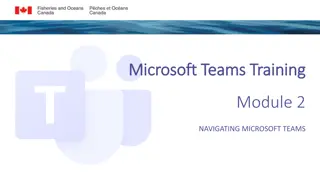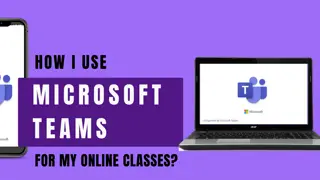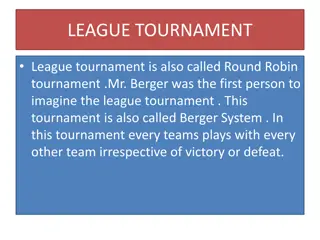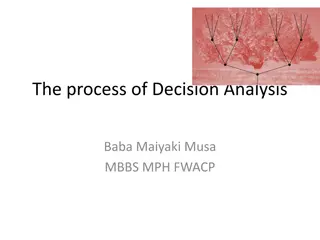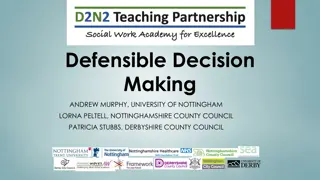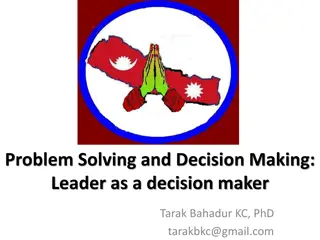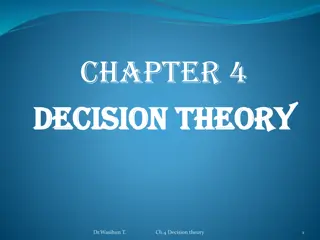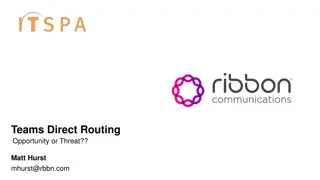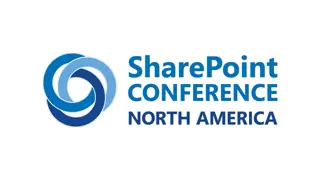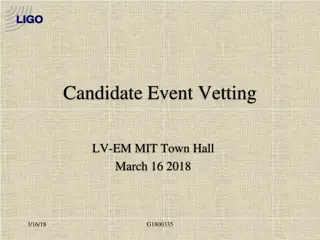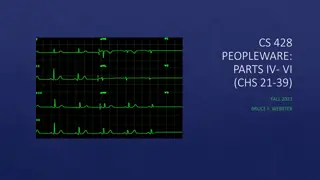Effective Decision-Making Strategies for Teams
Teams need effective decision-making procedures to navigate regular and significant decisions. Understanding how to decide, whether to inform, recommend, or decide directly, enhances productivity and consensus-building. Key concepts emphasize the importance of consensus while recognizing when individual or group decisions are more appropriate. This session aims to equip participants with the skills to create efficient decision-making processes.
Download Presentation

Please find below an Image/Link to download the presentation.
The content on the website is provided AS IS for your information and personal use only. It may not be sold, licensed, or shared on other websites without obtaining consent from the author. Download presentation by click this link. If you encounter any issues during the download, it is possible that the publisher has removed the file from their server.
E N D
Presentation Transcript
Facilitator Notes: Delete This Slide Handouts Common Approaches to Making Decisions Example Consensus Strategies Tier 1 Action Plan Tier 1 Artifact Rubric Tier 1 Action Planning Checklist MO SW-PBS
Working Agreements Be Respectful Be an active listener open to new ideas Use notes for side bar conversations Be Responsible Be on time for sessions Silence cell phones reply appropriately Be a Problem Solver Follow the decision making process Work toward consensus and support decisions of the group MO SW-PBS
Lesson Outcomes At the end of this session, you will be able to Create a decision-making procedure. MO SW-PBS
Key Concepts/Rationale Key Concepts/Important Ideas Effective leaders understand the importance of striving for consensus but also understand that not all decisions should be made by the entire group or by using consensus strategies. MO SW-PBS, 2019 MO SW-PBS
Importance of Decision-Making Procedures Team will encounter regular decisions that need to be made by the team as well as larger decisions, made by the entire staff, regarding the development and implementation of new approaches. Without effective tools to make these decisions, you may get bogged down in indecision or prolonged discussions and even division. MO SW-PBS
Deciding How to Decide Who decides? Teams are most effective and productive when they are clear about whether the role is to inform, recommend or decide. Inform Provide specific information as requested to facilitate decision-making by another individual or group. Recommend Obtain and evaluate the relevant facts and then propose alternative courses of action to facilitate decision-making by another individual or group. Decide Obtain and evaluate the relevant facts to directly participate in reaching a decision. MO SW-PBS
Deciding How to Decide Decision Option Description Every view or position is heard. All members indicate level of support for the decision. Consensus Decision determined by a majority vote. Majority Rule Those making the decision seek and take into account input from the entire team or staff. Participative or Representative One person or a group is empowered to make a decision without consulting others. Unilateral MO SW-PBS
Common Approaches to Decision Making MO SW-PBS
Discussion: Decision-Making Overall, which approaches to deciding are currently used in your school? Refer to HO7 Common Approaches to Making Decisions. Who decides what, and how are those decisions made? Are decisions being made efficiently? Do the approaches foster cooperation and collaboration when needed? MO SW-PBS
Discussion: Decision-Making Overall, which approaches to deciding are currently used in your school? Continue to refer to HO7 Common Approaches to Making Decisions. Do the approaches foster cooperation and collaboration when needed? Which decision-making strategies will you use in your SW-PBS work within your team? Which decision-making strategies will you use with the entire staff? MO SW-PBS
Closing and Next Steps Develop action steps for your team to address team decision-making procedures. Update your action plan using the Tier 1 Action Plan template and the Tier 1 Action Planning Checklist. Use the Tier 1 Artifacts Rubric to assess the quality of the resources your team develops. Use the results of the PBIS Self-Assessment Survey (SAS) to gain perspective from all staff, and results from the PBIS Tiered Fidelity Inventory (TFI) to gain perspective from your Building Leadership Team. MO SW-PBS
References Missouri SW-PBS (2019). Missouri schoolwide positive behavior support tier 1 implementation guide. MO SW-PBS







